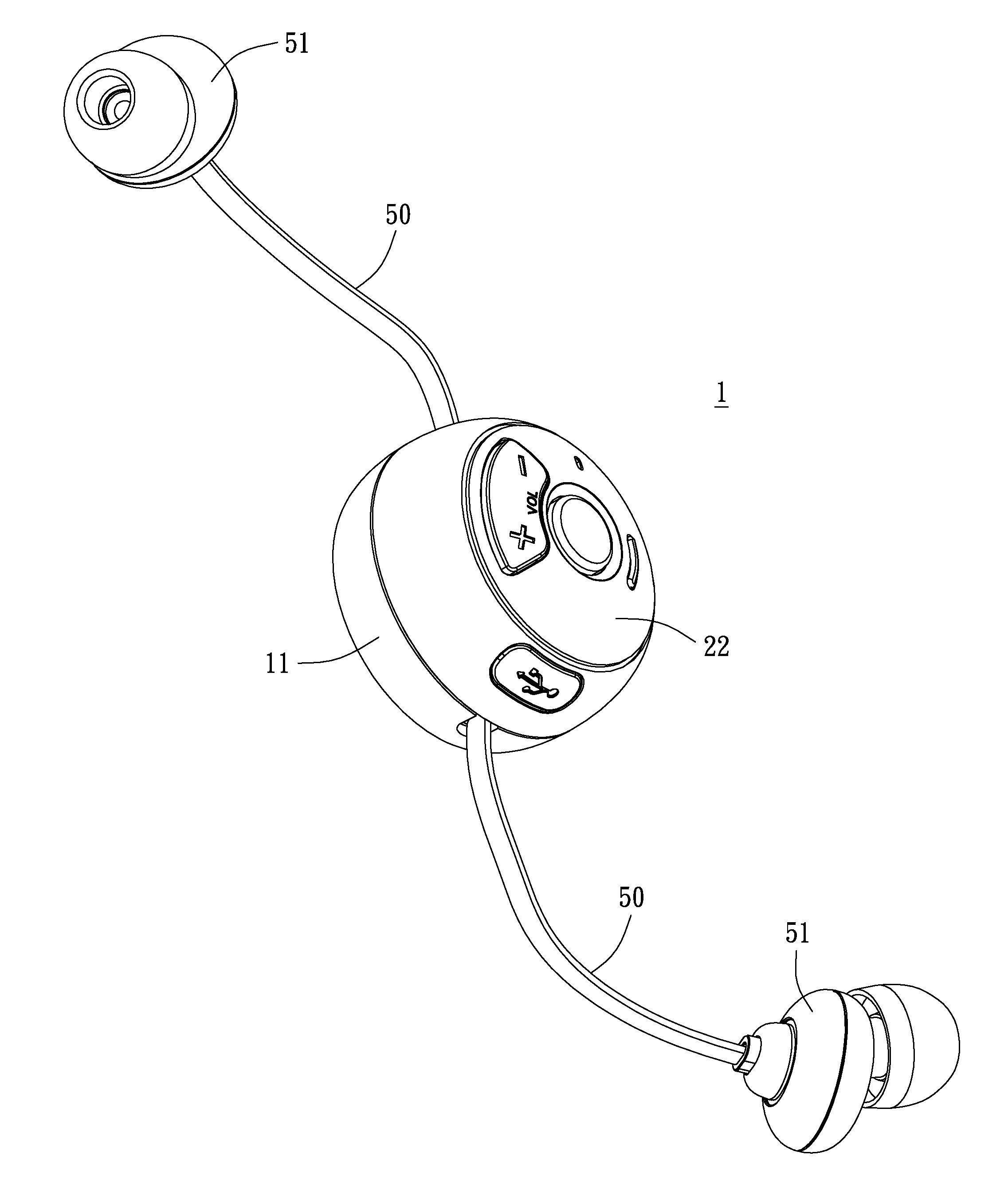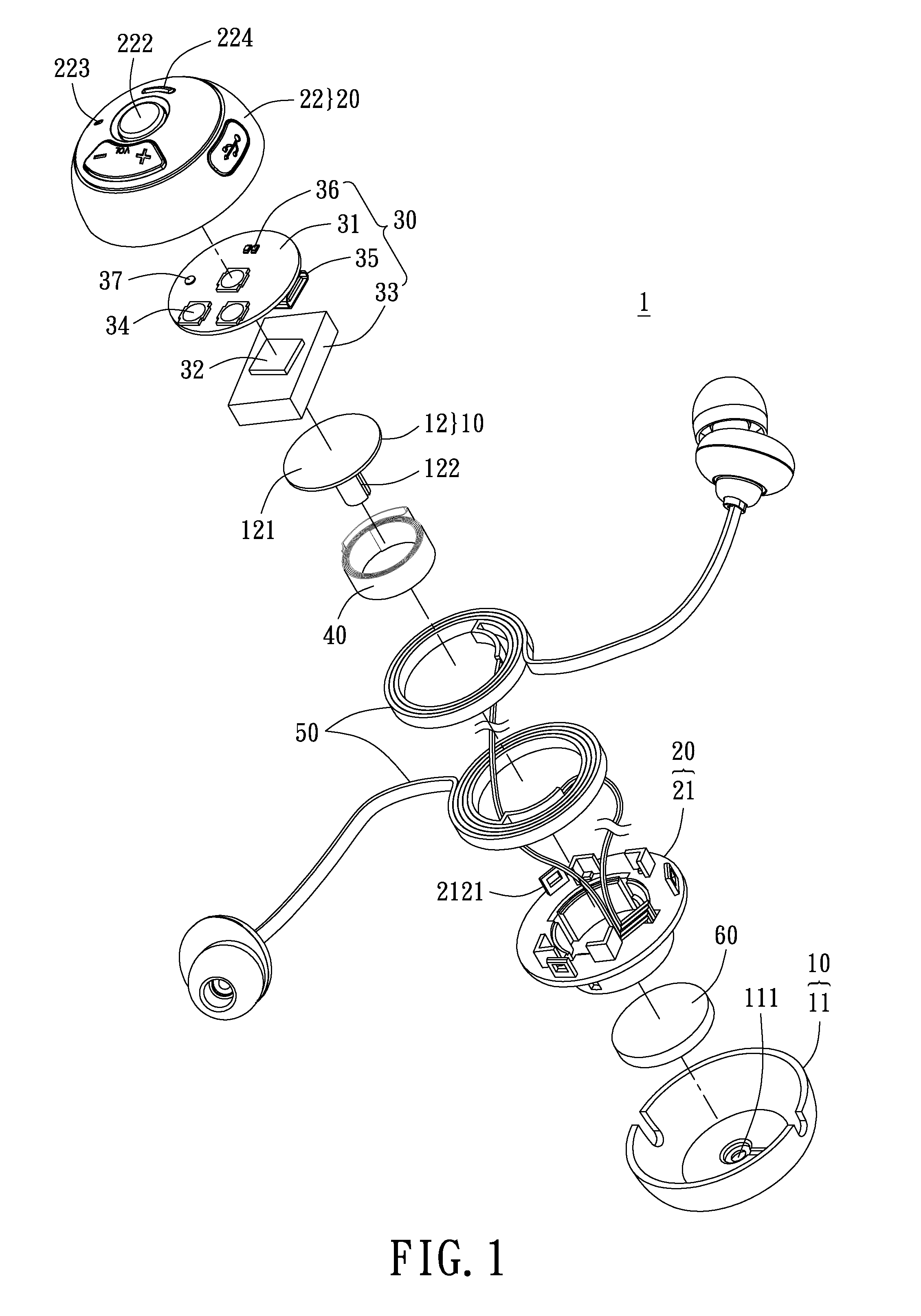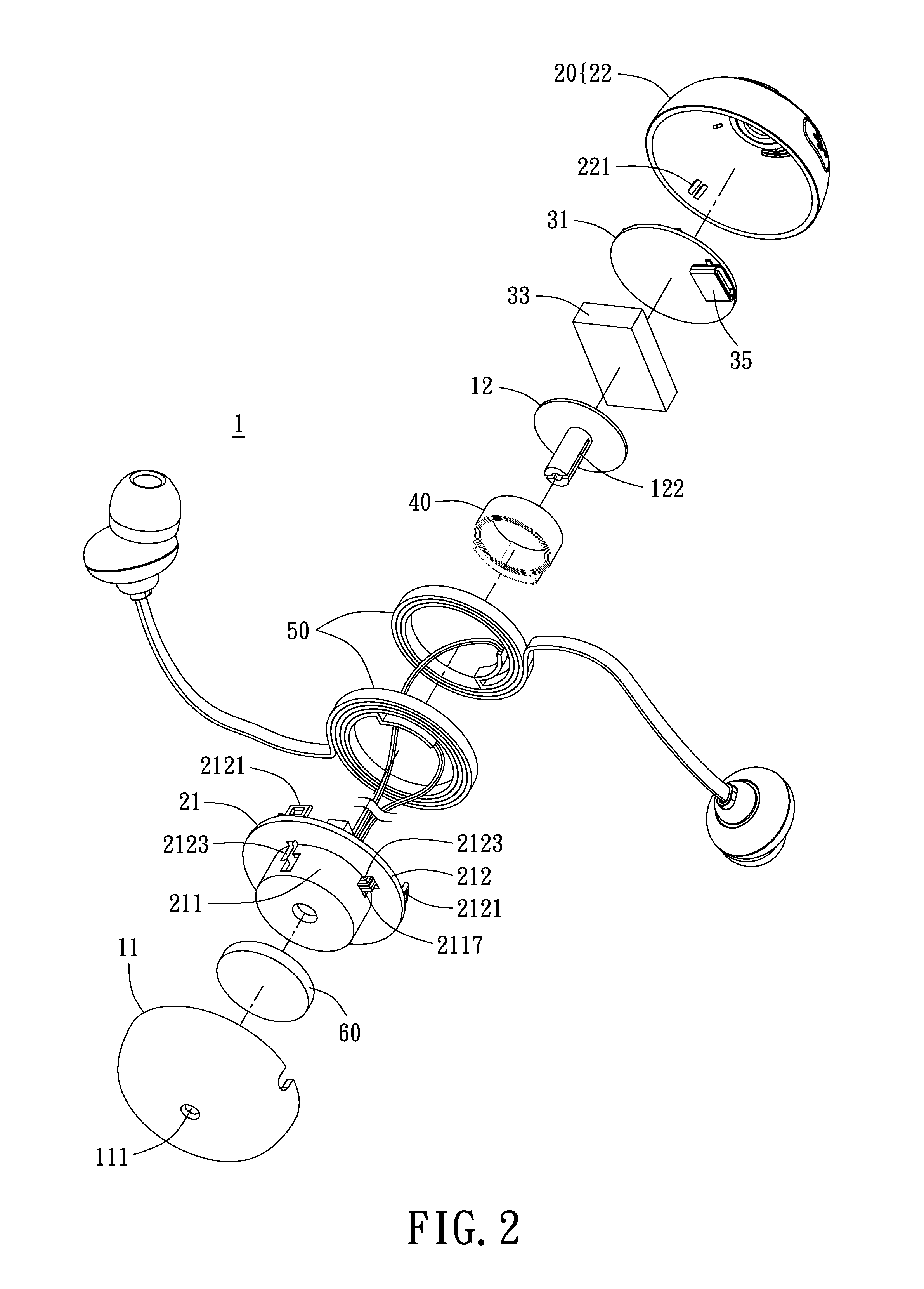Wireless earphone
- Summary
- Abstract
- Description
- Claims
- Application Information
AI Technical Summary
Benefits of technology
Problems solved by technology
Method used
Image
Examples
Embodiment Construction
[0019]The aforementioned illustrations and following detailed descriptions are exemplary for the purpose of further explaining the scope of the present disclosure. Other objectives and advantages related to the present disclosure will be illustrated in the subsequent descriptions and appended drawings.
[0020]FIG. 1 is a schematic exploded diagram of a wireless earphone 1 of the present disclosure. The present disclosure provides a wireless earphone 1, which has a fixing module 10, a rotating case 20, an electronic module 30 disposed on the rotating case 20, a tape spring 40, an earphone cable 50 wound around the rotating case 20, and a fastening module 60 disposed between the fixing module 10 and the rotating case 20. One end of the tape spring 40 is attached to the fixing module 10, and the other end is attached to the rotating case 20.
[0021]As shown in FIG. 1, the fixing module 10 includes a lower cover 11 and a fixing element 12. The outer surface of the lower cover 11 can have a ...
PUM
 Login to View More
Login to View More Abstract
Description
Claims
Application Information
 Login to View More
Login to View More - R&D
- Intellectual Property
- Life Sciences
- Materials
- Tech Scout
- Unparalleled Data Quality
- Higher Quality Content
- 60% Fewer Hallucinations
Browse by: Latest US Patents, China's latest patents, Technical Efficacy Thesaurus, Application Domain, Technology Topic, Popular Technical Reports.
© 2025 PatSnap. All rights reserved.Legal|Privacy policy|Modern Slavery Act Transparency Statement|Sitemap|About US| Contact US: help@patsnap.com



